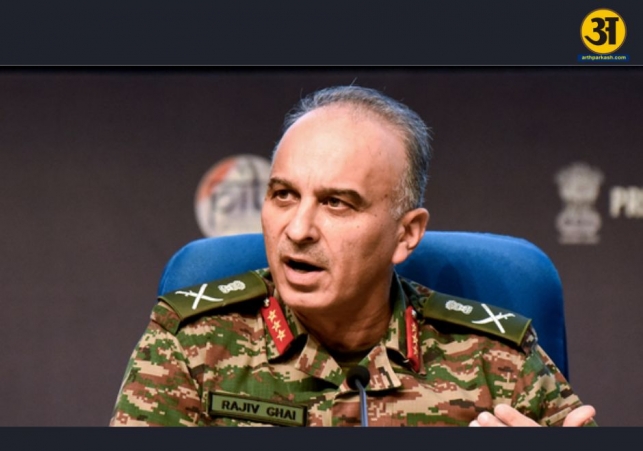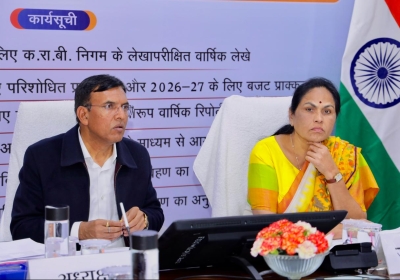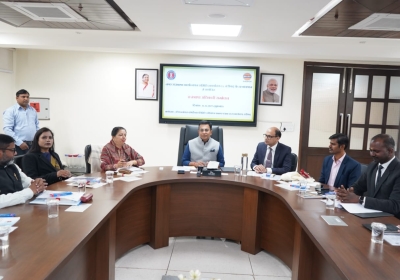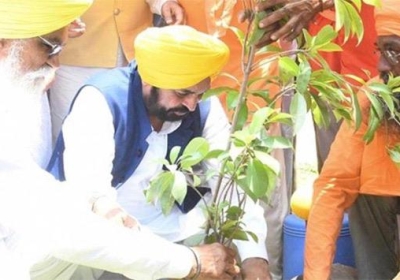
India-Pakistan DGMOs to keep working on border peace
India-Pakistan DGMOs agree to continue steps to ease border tensions
The Indian Army has said that both India and Pakistan have agreed to continue measures to lower tensions along their shared border. This agreement was made after the Directors General of Military Operations (DGMOs) of the two countries held talks on May 10, 2025.
The Indian DGMO, Lieutenant General Rajiv Ghai, announced this decision on Thursday, May 15. He said that both sides have agreed to maintain confidence-building steps and reduce the level of alertness along the border. This would help avoid conflict and unnecessary tension between the two nuclear-armed neighbours.
The decision comes at a time when there have been frequent small-scale incidents across the border, including the use of drones and occasional firing. These incidents have created stress and danger for people living in border areas.
Important understanding reached
In a statement, the Indian Army said, “Further to the understanding reached between the DGMOs of India and Pakistan on 10 May 25, it has been decided to continue confidence-building measures so as to reduce the alertness levels.”
This means that both armies will try to avoid actions that might cause fear or conflict. They will also try to lower the number of troops near the border and avoid making sudden military moves.
Earlier, on May 12, DGMO-level talks were also held. These talks focused on following the ceasefire agreement and stopping all forms of violence or aggressive acts across the border.
One of the key conditions discussed during these meetings was that “neither side will fire a single shot” or take any step that could be seen as hostile or harmful. Both countries agreed to stop aggressive actions and avoid creating fear along the Line of Control (LoC).
The Indian Army added that both sides will now work on reducing the number of troops in forward areas, which are close to the actual line separating the two countries. This is seen as a major step to lower the risk of sudden violence.
Although the talks have helped bring some calm to the border, the ceasefire is still being tested by incidents that violate the agreement. There have been brief drone sightings and firing incidents in various areas.
DGMO Rajiv Ghai expressed his concern during a press briefing on Sunday, where he spoke about Operation Sindoor, a special army action. He said, “It is disappointing but not surprising that the Pakistan Army violated the agreement within hours by opening fire and sending drones across the border.”
He said this happened on Saturday night and early Sunday morning. These incidents occurred even after both sides had promised to avoid any kind of attack or aggression.
This kind of behaviour makes it difficult to build long-term trust between the two countries. Even though there is an agreement on paper, small violations on the ground make it hard for peace to fully take shape.
Despite this, the Indian side is still ready to continue talks at the military level. But no political issues will be discussed. A government source confirmed, “Talks with Pakistan will be held only between the DGMOs. There will be no discussions on Kashmir or the Indus Waters Treaty.”
This shows that India wants to keep the talks focused strictly on military coordination, and not expand them into larger political topics that remain unresolved.
ALSO READ: IMD shares weather update as reports of ‘Cyclone Shakti’ make rounds
ALSO READ: PM Narendra Modi warns Pakistan: will not tolerate nuclear blackmail
Background of India-Pakistan border tensions
India and Pakistan have a long history of conflict, especially over Kashmir, a region both countries claim. Over the years, there have been several wars and ongoing border skirmishes between the two nations. The Line of Control (LoC) in Jammu and Kashmir is particularly tense, with frequent reports of firing and infiltration.
In February 2021, the two countries had agreed to a fresh ceasefire, promising to stop firing across the LoC. This brought temporary relief to people living near the border. However, in the months that followed, there were several incidents of ceasefire violations, including the use of drones for surveillance and smuggling.
Such incidents not only break the agreement but also increase the risk of a larger military clash. In many cases, both armies blame each other for starting the trouble.
In this environment, any effort to reduce alertness levels and build trust is seen as a welcome move. However, such steps need to be followed strictly by both sides to achieve lasting peace.
During his press conference in New Delhi, Lieutenant General Rajiv Ghai spoke in detail about Operation Sindoor. While the operation’s main details were not shared publicly, he used the opportunity to discuss the border situation and the challenges India faces in keeping peace along the LoC.
He said that Pakistan’s actions after the ceasefire talks were disappointing, as they once again showed a lack of seriousness towards peace. Despite this, India is still interested in maintaining communication with Pakistan’s army through the DGMO-level talks.
The Indian Army also wants the local populations on both sides of the border to feel safe and to carry on with their daily lives without fear. That’s one of the main reasons for trying to keep the border calm and avoiding unnecessary build-ups of troops.
The term “confidence-building measures” (CBMs) refers to steps that both armies can take to build trust and avoid misunderstandings. These include:
-
Stopping all firing across the border
-
Avoiding troop movements that can be seen as threatening
-
Setting up communication channels to resolve issues quickly
-
Not sending drones or aircraft across the border
-
Reducing the presence of soldiers near the frontlines
Such measures help reduce the chances of a sudden conflict. They also allow both sides to focus on other important national issues instead of staying on high alert all the time.
The Role of DGMOs
The Directors General of Military Operations (DGMOs) from both countries are the highest military officials responsible for planning and coordination of military actions. They are in direct contact through a telephone hotline that is used regularly to avoid misunderstandings.
When tensions rise, they also meet or talk to bring down the pressure. These conversations are very important because they provide a way to manage the border situation without political interference.
India has made it clear that for now, only military officers will talk. Political issues, including the situation in Kashmir or water-sharing agreements, are off the table.
Even as talks continue, the situation on the ground remains delicate. The Border Security Force (BSF) and Punjab Police recently recovered a Pakistani drone near the Tarn Taran border. This shows that despite the agreement, violations continue to happen.
These drone sightings often involve smuggling of drugs or weapons. They can also be used for spying. The Indian security forces remain alert to stop such threats, even while trying to support the ceasefire process.
For the villagers living near the LoC or International Border, peace agreements like these bring temporary hope. Many of them have lost family members or property during past clashes. For them, even a few months of calm can bring relief.
The agreement between India and Pakistan’s DGMOs to continue confidence-building measures is a small but important step towards peace. While past attempts at such peace have often failed, the current situation shows at least a willingness to talk.
However, for any peace deal to work, actions must match the words. Both sides must avoid violations and build trust over time.
The people of both countries — especially those living near the border — want peace, safety, and a better future. Whether this latest round of talks will deliver that remains to be seen.
For now, India and Pakistan continue to talk, and that, at least, is better than silence.





